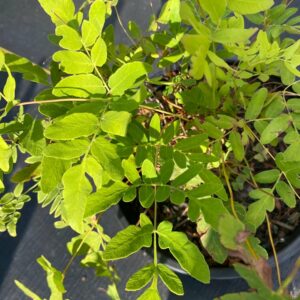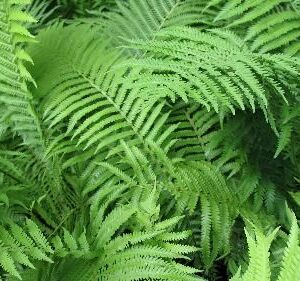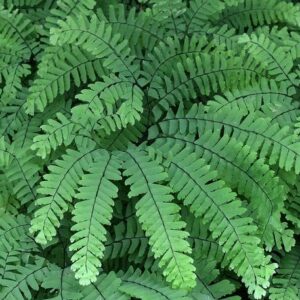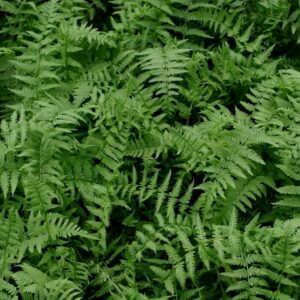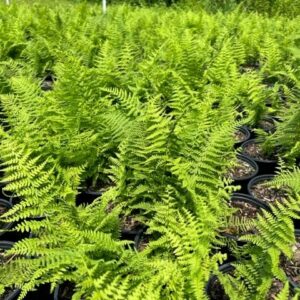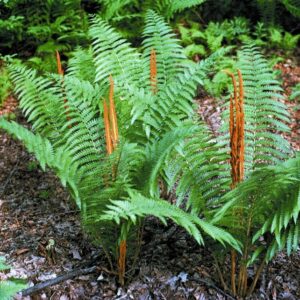- Ph: (631) 801-2855
- All Visits by Appointment Only
- info@linatives.com
- My Account
Osmunda regalis, commonly called royal fern, is a tall, deciduous, native fern which usually occurs on moist bluffs and ledges and along streams (sometimes growing in the water). Typically grows in clumps to 5-6′ tall, but with constant moisture can reach 6′ in height. Broad fronds have large, well-separated pinnae (leaflets) which give this fern an almost pea-family appearance.
Fronds typically turn yellow to brown in autumn. Spores are located in brown, tassel-like, fertile clusters at the tips of the fronds, thus giving rise to the additional common name of flowering fern for this plant.
It is best grown in medium to wet soils in part shade. It prefers moist, rich, humusy, acidic soils, but adapts to lesser conditions. Also prefers cool summer climates where it tolerates close to full sun as long as given consistent moisture. Full sun exposure is not recommended.
Golden clusters of spore cases appear on the stalks in the summer.
$9.99 – $29.99
Please note: Most pictures represent mature plants. Unless otherwise specified, all of our plants are sold in 4″ pots to make shipping possible and will mature in time.
Learn more about how the process works and how our plants are delivered.



| Native | |
|---|---|
| Sunlight | |
| Moisture | |
| Size | 1 Gallon, 1 Quart, 2 Gallon |
| Wetland Indicator |
Osmunda regalis, commonly called royal fern, is a tall, deciduous, native fern which usually occurs on moist bluffs and ledges and along streams (sometimes growing in the water). Typically grows in clumps to 5-6′ tall, but with constant moisture can reach 6′ in height. Broad fronds have large, well-separated pinnae (leaflets) which give this fern an almost pea-family appearance.
Fronds typically turn yellow to brown in autumn. Spores are located in brown, tassel-like, fertile clusters at the tips of the fronds, thus giving rise to the additional common name of flowering fern for this plant.
It is best grown in medium to wet soils in part shade. It prefers moist, rich, humusy, acidic soils, but adapts to lesser conditions. Also prefers cool summer climates where it tolerates close to full sun as long as given consistent moisture. Full sun exposure is not recommended.
Golden clusters of spore cases appear on the stalks in the summer.
